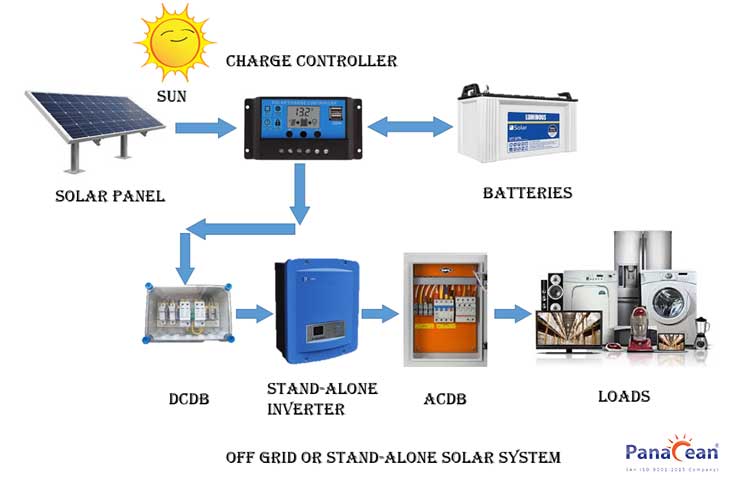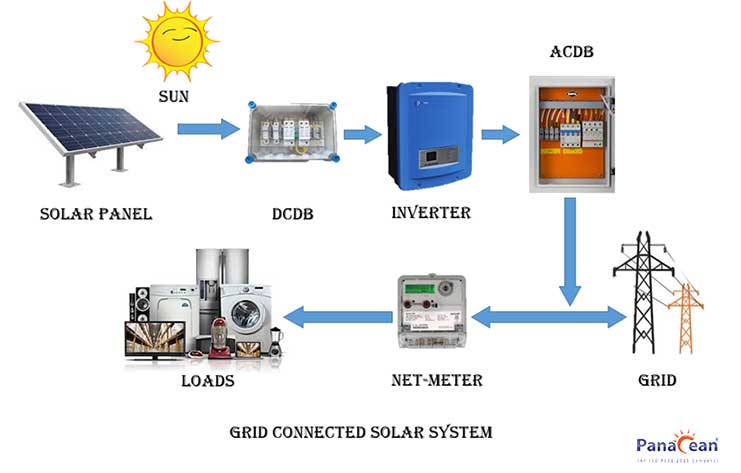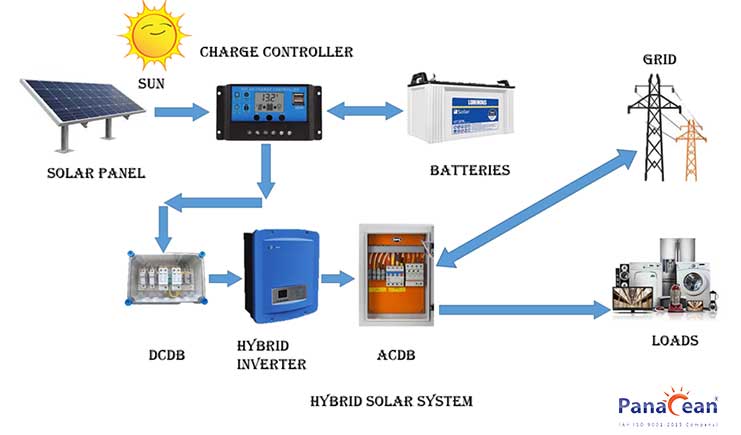

Stand Alone solar system is isolated from Distribution Grid. This System is used in places where the grid availability is zero or where there are high instances of power cut, Off-grid systems are best solution for relief from power cuts and they can be installed with a standalone inverter with a separate or integrated charge controller.
If the off-grid system is designed with appropriate solar panels and battery, it can supply power throughout the year without ever relying on the grid power.

Grid-connected PV systems (also known as grid-tied systems), which are directly connected to the distribution grid, use grid-connected inverters, and usually do not use batteries Charge Controller. Such systems are capable of exporting surplus power into the distribution grid.
This system would work only if Grid is available at that place.
A grid-connected PV systems is designed to automatically shut down if it detects anomalies in grid parameters such as voltage, frequency, rate of change of frequency, etc. On grid systems make sense for locations with no daytime power cut or with less than 2 hrs of daytime power cut. This type of system is suitable for reducing your electricity bills since it is cheaper than a battery based system and there is no recurring cost of replacement of components.

Hybrid PV systems are connected to the grid and also have a battery backup. If a hybrid PV system observes anomalies in grid parameters, they are designed to isolate the Consumer from the grid and continue to supply power from the PV system and batteries. Batteries can be charged by the grid or by solar energy in such systems.


Solar Energy has great future but susceptible to fail if operation and maintenance is overlooked.